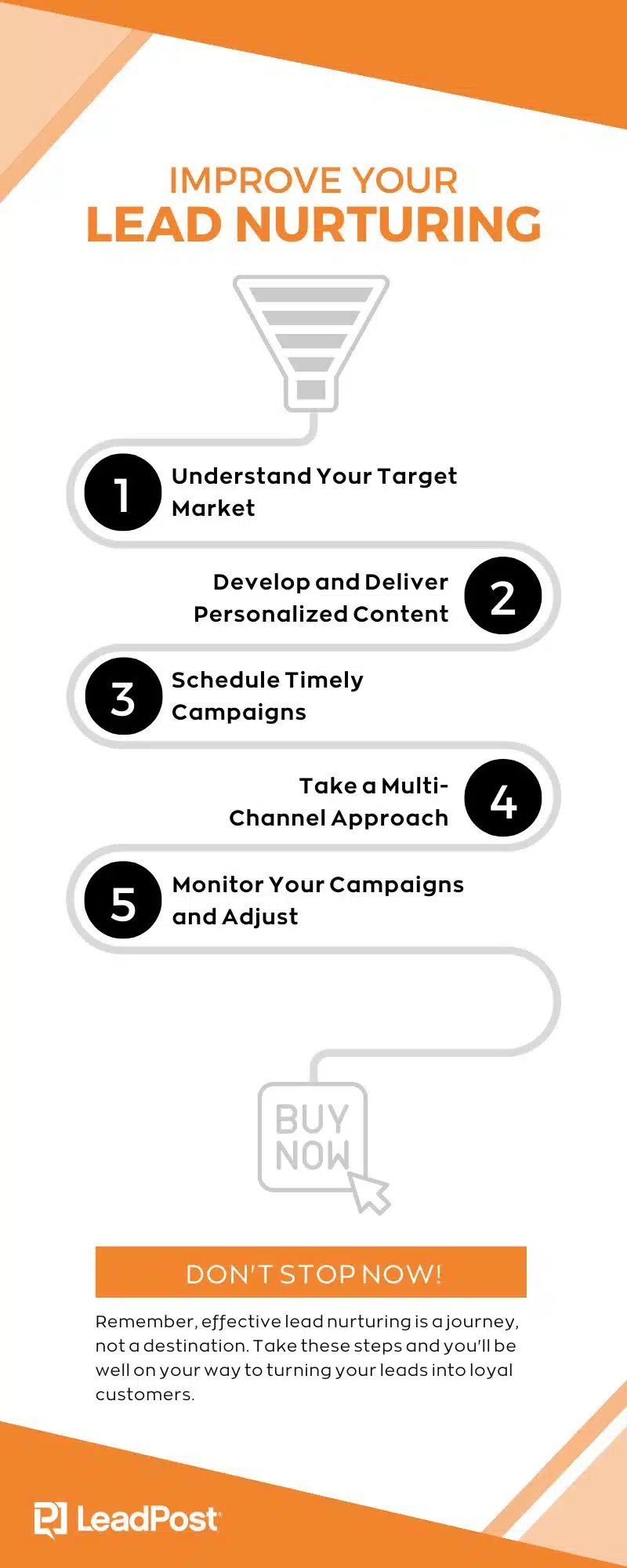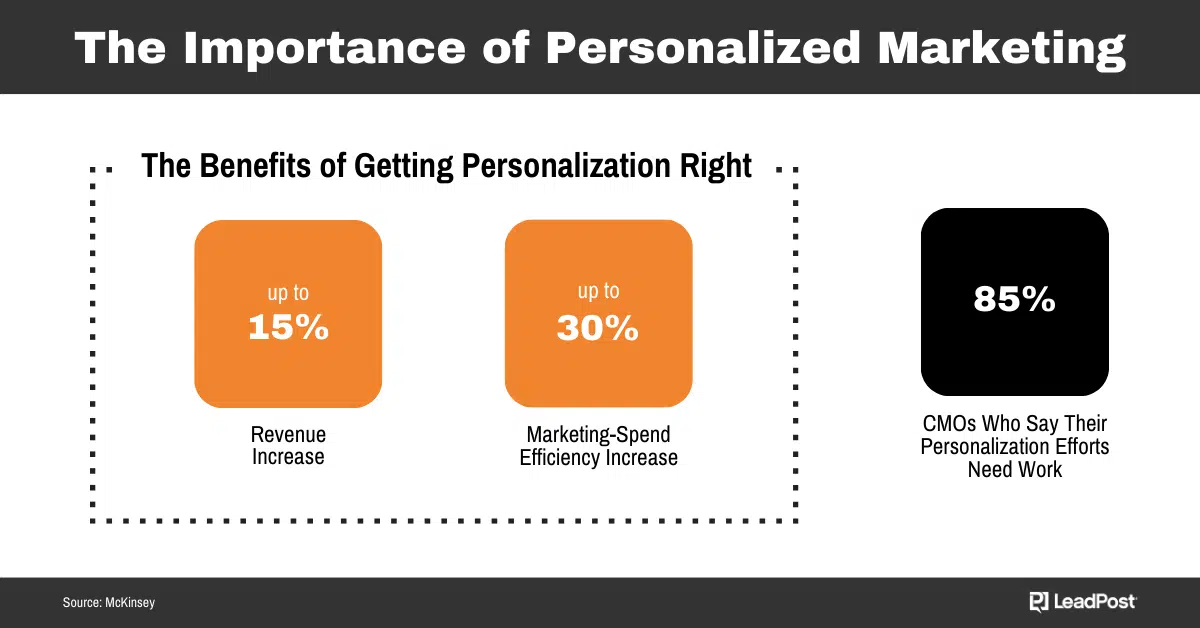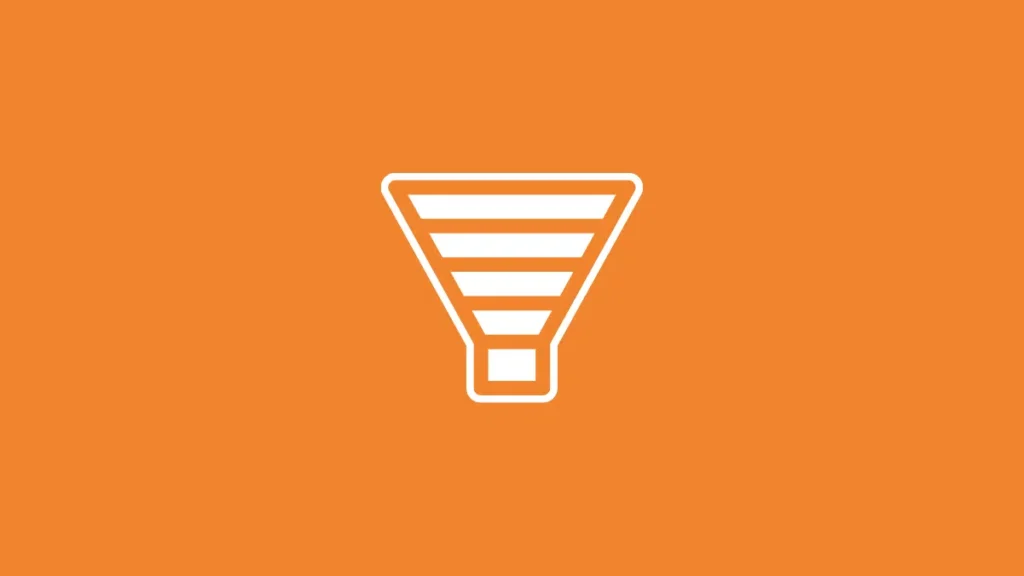We live in a fast-paced, information-saturated marketplace. Lead generation is just the first step in a lengthy customer journey. The real challenge lies in converting these leads into loyal, paying customers. Lead nurturing plays a crucial role in that process.
Table of contents
What is Lead Nurturing?
Lead nurturing is the process of developing and reinforcing relationships with potential buyers. It requires careful consideration of every stage of the sales funnel.
The specific components involved are:
- understanding the needs of potential customers
- providing them with relevant information based on their progress through the customer journey
- addressing their questions, concerns, and objections
- subtly guiding them toward making a purchasing decision
In essence, lead nurturing is about providing value specific to a customer’s needs. Ultimately, they need to solve a problem. But at each stage of the funnel, their needs will be different than at any other stage.
At first, they may need to know more about the problem they have. Then they may need to know about potential solutions. Eventually, they’ll need to know more about your offering. (That’s an oversimplification, but you get the idea.)
Nurturing Leads Based on the Customer Journey
The customer journey (also known as the buyer’s journey) is an important part of lead nurturing. You need to personalize your efforts to the needs and interests of each prospective customer. Those needs will vary based on where they’re at in the customer journey.
Understanding that journey ensures that your leads receive the most relevant content. It also significantly increases the likelihood of converting these leads into loyal customers.
The customer journey is typically divided into three main stages:
- Awareness
- Consideration
- Decision
Let’s delve deeper into each of these stages and how they fit into your lead nurturing strategy.
The Awareness Stage
This is the initial stage where a potential customer realizes they have a problem or a need. They might not be able to precisely define it yet.
During this stage, your lead nurturing efforts should focus on educational content. Help these potential customers understand their problem or need better. This could be through blog posts, infographics, ebooks, or informative videos.
The awareness stage is the perfect opportunity to:
- showcase your expertise in the field,
- build trust with the potential customer, and
- gather information about them
Website visitor identification software is helpful at this stage. Visitors in the awareness stage aren’t as motivated to convert. But visitor identification tools identify visitors who don’t fill out a form on your site.
It also allows you to track the user’s behavior and engagement with your content. That way you can get a better idea of their interests and needs. It’s a simple and cost-effective way to quickly improve your lead nurturing campaigns.
The Consideration Stage
At this point, the prospective customer has clearly defined their problem or need. They’re actively searching for solutions. Highlight how your products or services can address their problem. Case studies, webinars, product demonstrations, and comparison guides are effective at this stage.
This is the stage where personalization really comes into play. Use the insights gained from the awareness stage to tailor your lead nurturing campaigns. That will significantly increase the likelihood of engagement.
The Decision Stage
In this stage, the prospective customer has chosen a solution category. Now they are deciding on a specific provider. This is the stage where you need to convince them that your solution is the best fit for their needs. Free trials, consultations, detailed product information, and testimonials are helpful at this point.
When it comes to lead nurturing, timely and relevant follow-ups are key in the decision stage.
How to Develop an Effective Lead Nurturing Strategy
Creating an effective lead nurturing strategy involves planning and execution. Here are five steps to get you started.

Understand Your Target Market
Not all leads are the same, and they shouldn’t all receive the same marketing messages.
The foundation of successful lead nurturing lies in understanding your target audience. Use buyer personas. Map out customer journeys. Gather insights into current and potential customers’ needs, interests, and pain points.
Then, segment your leads to provide more relevant, personalized content.
Develop and Deliver Personalized Content
Personalization is key in lead nurturing. Use your understanding of the prospect to develop content that resonates with them. You’ll need content for each segment’s unique needs and position in the buyer’s journey.
This could range from personalized emails to customized content recommendations on your website.

Schedule Timely Campaigns
Timing is crucial in lead nurturing. Use triggers to automate follow-up campaigns. Focus on actions like:
- downloading a whitepaper
- abandoning a shopping cart
- visiting specific web pages
Automation can make this process more efficient and effective. Use tools that allow you to automate email campaigns, social media posts, and other interactions based on specific triggers or user behaviors.
Take a Multi-Channel Approach
Don’t limit your lead nurturing efforts to a single channel. Use multiple channels to engage your prospects across different stages of the buyer’s journey.
Monitor Your Campaigns and Adjust
Track your lead nurturing efforts to understand what’s working and what’s not. Use these insights to refine your strategy and make improvements.
Lead Nurturing is a Necessity
In today’s consumer-centric marketplace, nurturing leads is no longer optional. It’s a necessity. Build relationships with your prospects, understand their needs, and provide value over time. That is the pathway to converting leads into loyal customers.
Lead nurturing is not a one-time effort. It’s a long-term commitment that requires patience and persistence.
Need to Fill Your Pipeline?
If you need more leads to nurture, check out our B2C lead generation tool and our B2B lead generation tool. You can get up to 125 free leads with a trial.
